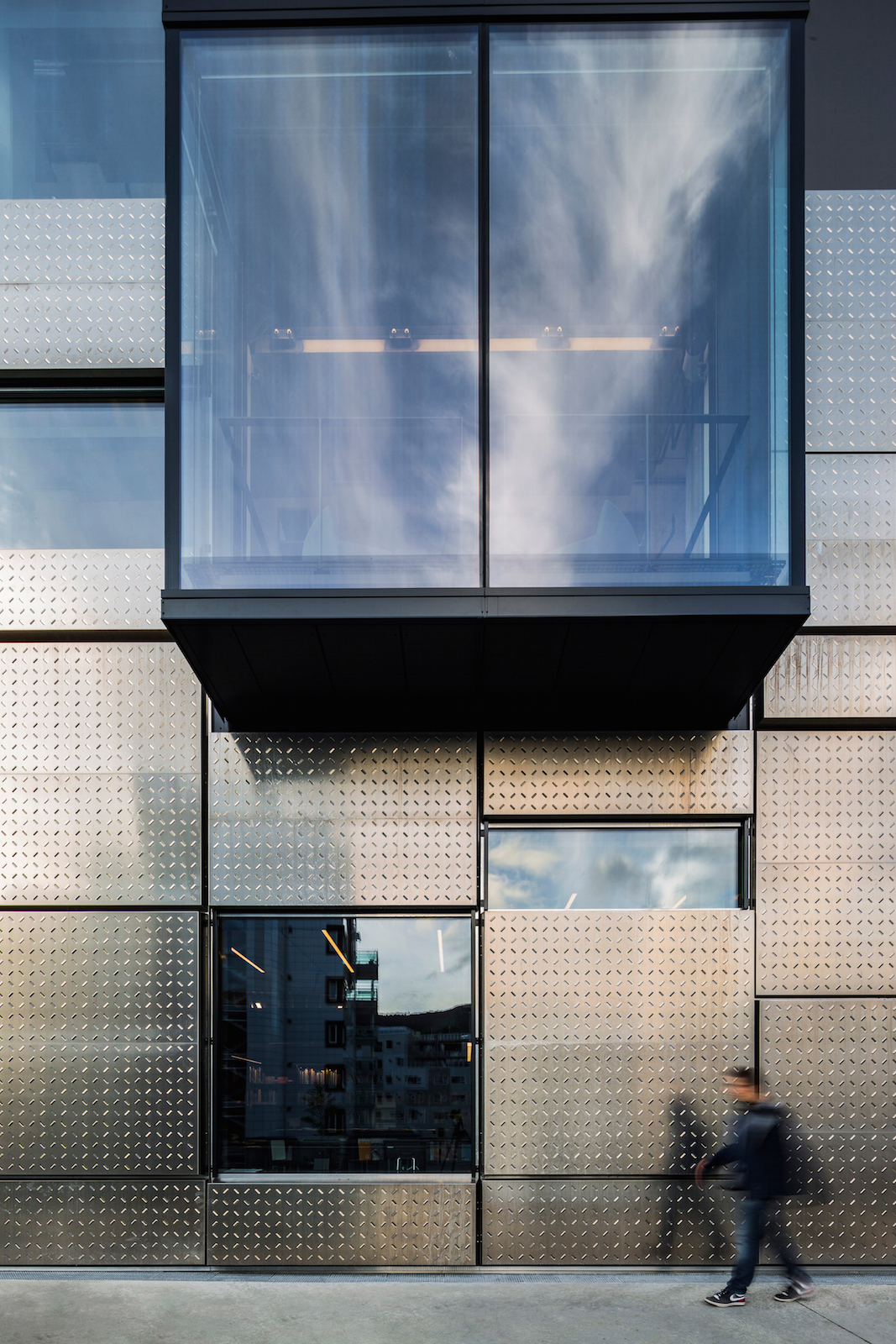The University of Bergen in Norway recently opened a new building for its Faculty of Fine Art, Music and Design (KMD), which features a shiny, puzzle-like aluminum façade. Replacing the former Bergen Academy of Art & Design (KHiB), the new KMD assembles the previously scattered faculty buildings under one roof. The new 4,800 sq m cross-disciplinary faculty building, which was designed by Snøhetta, is now the second largest cultural building in Bergen after the 1,500-seat Grieg Concert Hall.
Aluminum Façade
While meeting its aim of welcoming collective artistic installations and individual expression through a clean-cut aesthetic, the new KMD building is also designed to be environmentally friendly and durable, utilizing materials that will withstand the rainy climate of the Norwegian west coast and a high degree of rough use, wear, and tear. The architect Snøhetta explained, “The material palette has a clear reference to the Norwegian coast, using well-established materials such as pine wood block flooring, birch veneer, raw aluminum, crude steel, and concrete.”
The building’s exterior is clad in 900 pre-fabricated raw aluminum elements in various sizes, which protrude from the wall at varying distances, creating a puzzle of depth, breadth, and length. The rhythm of the aluminum surface is only interrupted by large cantilevered box-shaped windows. “This robust and playful expression gives great flexibility when planning for windows and lighting conditions,” said Snøhetta. “The windows of the building are set at different heights to allow for maximum usable wall space and excellent daylight conditions. Moreover, the glass roof conveys light from the sky, which melts together with the light streaming through the glass wall. The shadows in this space are somewhat erased, leaving the colors of the room authentic and natural.”
Snøhetta also focused on durability and robustness throughout the façade design process. Due to the rainy and sometimes stormy coastal climate in which KMD is built, the exterior materials on the building needed to be able to withstand harsh conditions. The aluminum selected is seawater-durable, as well as meeting one of Snøhetta’s other requirements for the exterior — that the material used weather in a way that highlights its unique qualities. The aluminum surfaces will gradually age and naturally oxidize, heightening the variations in colors and textures over time. Furthermore, the metal cassettes shift according to the weather conditions of the west coast and reinforces the metallic effect of the aluminum.


